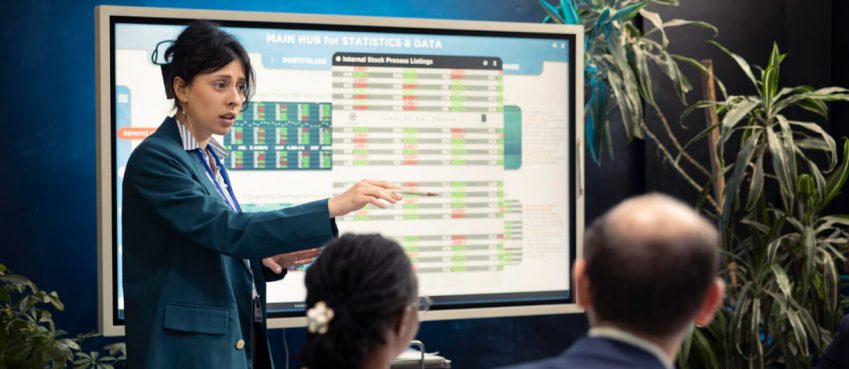
Human-centered design (HCD) is an approach to product design and manufacturing that prioritizes the needs, preferences, and behaviors of the end-users throughout the entire design process. It involves understanding the users’ perspectives, engaging them in the development cycle, and creating products that suit the particular needs of their users.
This approach ensures that products are not only functional and efficient but also intuitive, enjoyable, and meaningful to use. Businesses that cater to increasingly discerning and demanding consumers can no longer afford to overlook the importance of designing products that truly resonate with their target audience. HCD offers a solution by placing the user at the center of the design process. By adopting an HCD approach, enterprises can enhance user satisfaction, drive innovation, and ultimately gain a competitive edge in the marketplace.
Perhaps your business needs products that are designed with the users in mind. In that case, working with a product design Auckland company that employs HCD will help you achieve your goals. Here’s how you and the product designer you have partnered with will likely approach this challenge.
Empathize with Users
Empathy lies at the heart of HCD. In this context, empathizing involves stepping into the shoes of the end-users to understand their needs, desires, and pain points. By empathizing with users, designers can gain valuable insights that inform every aspect of the product’s design, from its features to its aesthetics.
There are several techniques, such as ethnographic research and interviews, that can be employed to develop a deep understanding of users’ behaviors and motivations. For example, a team designing a new smartphone app might spend time shadowing users in their daily routines to identify pain points and areas for improvement.
Also read: Walmart Eye Center Review: Is It Worth The Money?Define the Problem
Before diving into the design process, it’s essential to clearly define the problem that the product aims to solve. This means distilling insights gathered during the information-gathering phase into a concise problem statement that outlines the user’s needs and challenges. Defining the problem provides a clear direction for the design team, as it ensures that their efforts are focused on addressing the most pressing issues faced by the users. It’s not out of the ordinary for furniture makers, for instance, to consider back pain as a problem that should be addressed when designing a new line or model of office chairs.
Generate Ideas
Ideation is a creative process that involves brainstorming and generating a wide range of ideas and concepts to address the defined problem. This step encourages divergent thinking, and it offers space for designers to explore unconventional solutions and push the boundaries of innovation. During this part of the process, the designers can employ strategies and techniques such as brainstorming sessions, sketching, and prototyping to generate and visualize ideas.
Also read: Top 10 Web Hosting Companies in 2021 | Detailed ReviewPrototype and Test
A crucial step in the HCD process, prototyping allows designers to quickly iterate different design solutions and gather feedback from users. Prototypes can range from low-fidelity mock-ups to high-fidelity prototypes that closely resemble the final product. Testing prototypes with real users enables designers to identify usability issues, gather insights, and refine the design iteratively. Going back to the example of the smartphone app designers, the team can come up with multiple versions of the app and gather feedback from the app’s test users.
Iterate and Refine
After creating a prototype of the product, designers will continuously refine and improve the product based on user feedback and testing results. This iterative approach allows for rapid experimentation and adaptation, all of which are done to ensure that the final product meets the needs and expectations of the users. By embracing a mindset of continuous improvement, designers can address issues as they arise and incorporate new insights throughout the design process.
Collaborate Across Disciplines
Collaboration is key to the success of HCD, as it brings together diverse perspectives and expertise to tackle complex problems. Cross-functional teams comprising designers, engineers, marketers, and end-users work together throughout the design process. During this time, they can share insights, ideas, and feedback that are informed by their respective areas of expertise. This collaborative approach ensures that all stakeholders are aligned and invested in the success of the product, leading to more holistic and innovative solutions.
Also read: How To Calculate Your Body Temperature With An iPhone Using Smart ThermometerEnsure Accessibility and Inclusivity
Core to the HCD approach are the concepts of accessibility and inclusivity. Sticking to these principles helps ensure that the final products are usable and beneficial to users of all abilities and backgrounds. Designers must consider factors such as usability and affordability to create products that are accessible to a diverse range of users.
This involves conducting accessibility audits, incorporating inclusive design principles, and actively seeking feedback from underrepresented user groups. For example, the team designing a new mobile app might prioritize features such as text-to-speech functionality and customizable interfaces to accommodate users with visual or motor impairments.
Incorporating these steps into the product design process can help businesses create products that are not only technologically advanced but also truly resonate with their target audience. This can lead to increased user satisfaction, loyalty, and ultimately, business success. By embracing human-centered design, companies in New Zealand as well as other countries can foster innovation and stand out in an increasingly competitive marketplace.
Top 10 News
-
01
[10 BEST] AI Influencer Generator Apps Trending Right Now
Monday March 17, 2025
-
02
The 10 Best Companies Providing Electric Fencing For Busines...
Tuesday March 11, 2025
-
03
Top 10 Social Security Fairness Act Benefits In 2025
Wednesday March 5, 2025
-
04
Top 10 AI Infrastructure Companies In The World
Tuesday February 11, 2025
-
05
What Are Top 10 Blood Thinners To Minimize Heart Disease?
Wednesday January 22, 2025
-
06
10 Top-Rated AI Hugging Video Generator (Turn Images Into Ki...
Monday December 23, 2024
-
07
10 Top-Rated Face Swap AI Tools (Swap Photo & Video Ins...
Friday December 20, 2024
-
08
10 Exciting iPhone 16 Features You Can Try Right Now
Tuesday November 19, 2024
-
09
10 Best Anatomy Apps For Physiologist Beginners
Tuesday November 12, 2024
-
10
Top 10 Websites And Apps Like Thumbtack
Tuesday November 5, 2024







